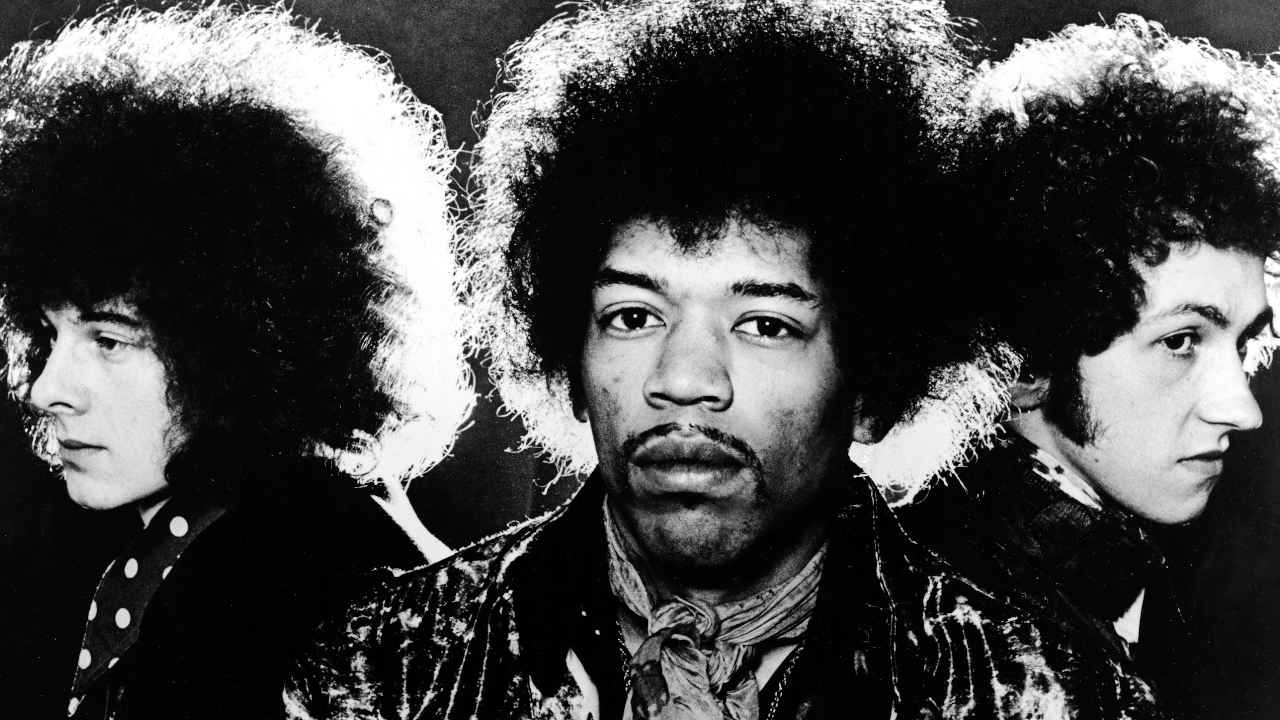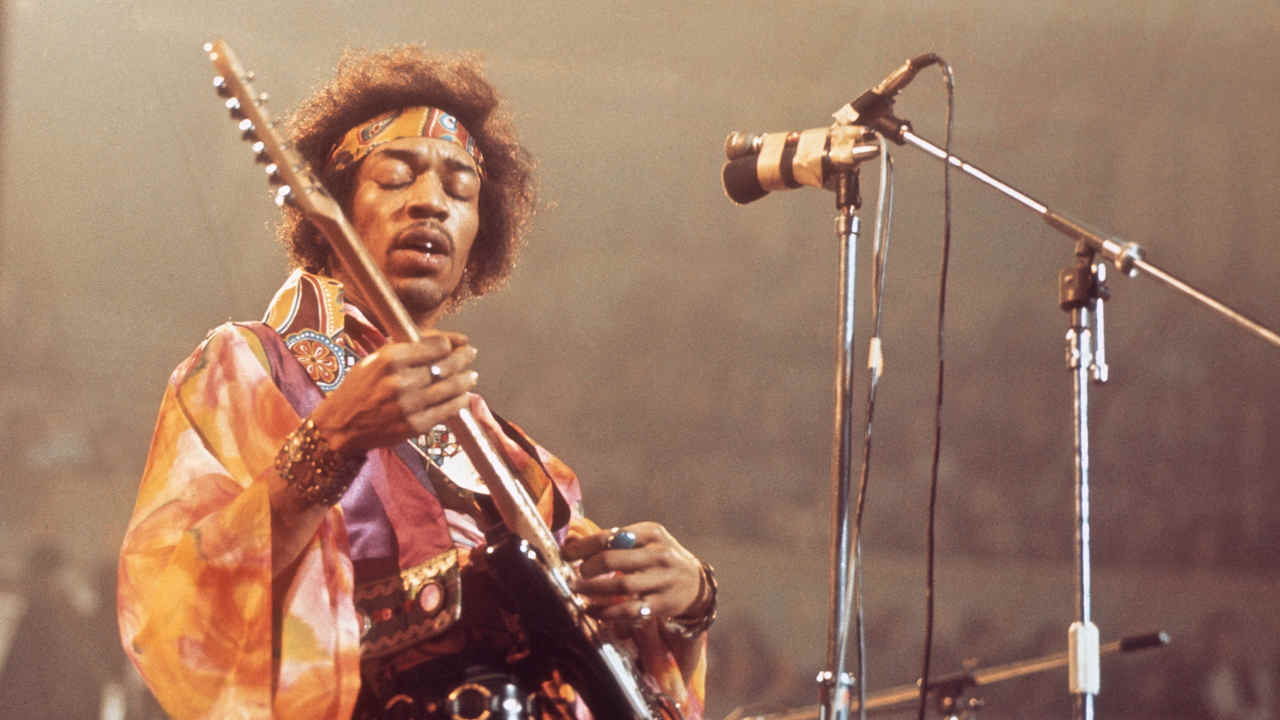“He found things that other people wouldn’t think of finding in there”: how Jimi Hendrix turned Bob Dylan’s All Along The Watchtower into one of rock’s greatest songs
Multiple sessions, countless takes and a drunken Brian Jones – how Jimi Hendrix claimed All Along The Watchtower as his own

It was, said Bob Dylan of All Along The Watchtower, “a small song of mine that nobody paid any attention to”. But at the end of ’67, Jimi Hendrix was repeatedly dropping the needle on this unloved corner of Dylan’s John Wesley Harding LP, hearing something deeper in than the rudimentary three-chord strum.
Hendrix was a Dylan fanatic, to the point where apocryphal tales told of him clearing the dancefloor of a New York club by insisting the DJ play Blowin’ In The Wind. But he was something more, too; the guitarist felt a deep kinship that meant he considered the two writers’ oeuvres entwined, …Watchtower being another of those Dylan compositions so on his wavelength that “I feel like I wrote them myself”.
Hendrix had been spotted around town with the John Wesley Harding vinyl under his arm, and had become fixated on the fourth track. “I remember Jimi said to me, ‘That’s the coolest song’,” Traffic’s Dave Mason told Guitar World.
By January 1968 – just a month after Dylan’s original had landed – Hendrix was ready to build his own Watchtower, albeit within the constraints of London’s Olympic Studios’ primitive four-track set-up.
He squeezed out Noel Redding, choosing to overdub the bass himself. “That pissed off Noel no end,” recalled engineer Eddie Kramer, “and off he would go to the pub.” Drummer Mitch Mitchell remained on the stool, and might have been seen to scratch his head as Hendrix taught him how to turn around the intro beat. Likewise, across the studio floor, a guesting Mason – no slouch on guitar himself – struggled with a 12-string rhythm part that Kramer noted “always buggers people’s minds up”.

The session crawled on, clocking upwards of 27 takes. At least a couple of those misfires might have been attributed to Rolling Stones guitarist Brian Jones, who fell through the door of Olympic, paralytically drunk, and commandeered the piano.
“Jimi could never say no to his mates, and Brian was so sweet,” groaned Kramer. “He came in and said ‘Oh, let me play’. It was take 21 and we could just hear ‘clang, clang, clang, clang’. It was all bloody horrible and out of time, and Jimi said ‘Uh, I don’t think so’. Brian was gone after two takes. He practically fell on the floor in the control room. Dear Brian…”
Sign up below to get the latest from Classic Rock, plus exclusive special offers, direct to your inbox!
But the gathering reel of tape were also testament to an interpretation that was evolving at rapid pace, from a lighter and bass-free early take with Hendrix strumming acoustic, to the glowering, heavily layered studio collage of legend. That summer at New York’s Record Plant, Hendrix went down the rabbit hole again for Watchtower’s vocal and percussion, benefitting from the quantum leap of the studio’s 16-track technology. Perhaps he was never truly satisfied with All Along The Watchtower: “I think I hear it a little bit differently,” he kept saying, according to engineer Tony Bongiovi, as overdubs came and went.
But Hendrix came back out with a masterpiece. The original had hinted at impending apocalypse, with its imagery of growling wildcats, howling winds and sinister horsemen. Yet there is a limit to the foreboding that can be summoned with an acoustic and reedy harmonica. With his interpretation, Hendrix left no doubt of the intended mood. Opening with a staccato clang of guitar and drums, followed by string bends that evoked a car alarm, the sonic impression was of a world spinning off its axis into darkness, with a little of the same gathering storm of the Stones’ Gimme Shelter. Little wonder that decades later, when Tom Hanks’ character patrols the jungle hellscape of Vietnam in Forrest Gump, it’s Hendrix’s song that soundtracks the scene.
Hendrix admitted he couldn’t match Dylan for lyrics. “I could never write the kind of words he does,” he said. But nobody, then or now, could touch Jimi’s guitar playing. Supported by a production bed that takes in everything from looping to backwards tape effects, the solos that punctuate the song remain extraordinary, Hendrix slipping from wah-soaked flourishes, to haunted Hawaiian swoons, to the trilling single-note outro.
Kramer remembers Jimi using a Gibson Flying V, and studiously working out his path through the solo in advance. But more spontaneous was the way he grabbed for knives, beer bottles and, finally, a Zippo lighter for the slide work. “Well, there were a lot of devices that he used,” the engineer reflected in Total Guitar. “A Zippo was one of them, but he was known sometimes to use his rings.”
Released in September 1968 as the lead single from Electric Ladyland, All Along The Watchtower was not so much a cover as a song rewritten from the ground up. To hear it was to almost forget the existence of the original, which now seemed a mere blueprint by comparison. The song reached No.5 in the UK and No.20 in the US, making it Hendrix’s breakthrough success in his homeland. To date, it has been streamed on Spotify over 640 million times – more than twice the total of the song in second place, Purple Haze.
As for Dylan, he was magnanimous, scarcely believing what had come from his raw materials. “It overwhelmed me, really. “He had such talent, he could find things inside a song and vigorously develop them. He found things that other people wouldn’t think of finding in there. He probably improved upon it by the spaces he was using. I took licence from his version, actually, and continue to do it to this day.”
Henry Yates has been a freelance journalist since 2002 and written about music for titles including The Guardian, The Telegraph, NME, Classic Rock, Guitarist, Total Guitar and Metal Hammer. He is the author of Walter Trout's official biography, Rescued From Reality, a music pundit on Times Radio and BBC TV, and an interviewer who has spoken to Brian May, Jimmy Page, Ozzy Osbourne, Ronnie Wood, Dave Grohl, Marilyn Manson, Kiefer Sutherland and many more.

